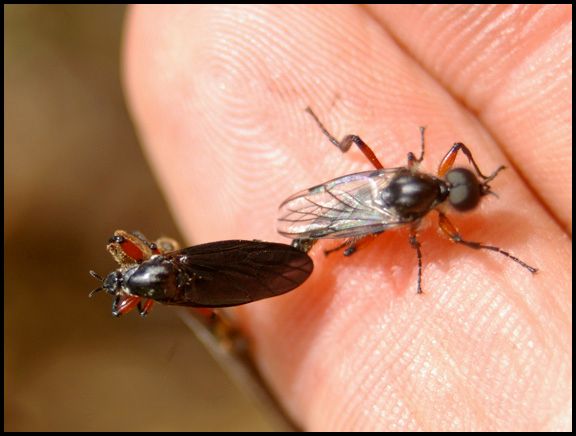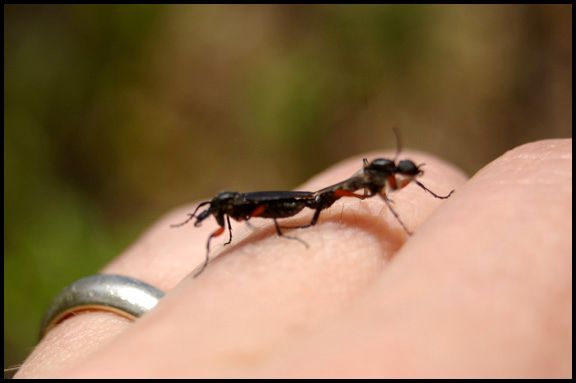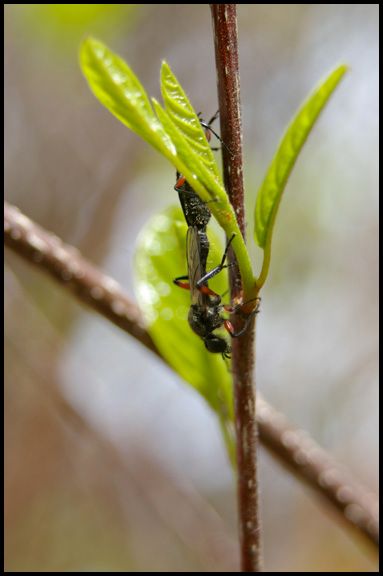50 more urban species #12 Lovebug

Lovebugs, Plecia nearctica or P. americana
As a lifelong New Englander, this was a completely new animal to me when I discovered it at the end of last month. But to a person who lives in one of the Gulf Coast states, these are revoltingly familiar. Lovebugs spend much of their adult lives connected in the copulatory act. One imagines that this strategy is helpful for the male, as it precludes any breeding competition. Apparently the male tends to precede the female in death, his lifeless body continuing to prevent other suitors from mating. What evolutionary advantage this supplies to the female is not clear to me.

Larval lovebugs are unremarkable maggots, living among grass roots feeding on plant debris. The mysterious spread of these insect around southern North America is probably due to the shipment of plants, especially turf, from place to place. There are two species with a fair amount of range overlap, from Central America to the southern US. Neither is supposed to be in Boston, so this pair may have hitched a ride on a plant (there is a tropical greenhouse only a few hundred feet from where these pictures were taken) or drifted up some other way. In any case, I only saw this pair and a third lovebug cruising stag, which is not how these creatures are usually encountered.

They are most famous for their sudden appearance in massive numbers. For reasons that are not well understood (possibly some combination of gases and lights) billions of lovebugs swarm to the highways of Florida, Louisiana and other states. The numbers of crushed insects on radiator grills and in air intakes can incapacitate a vehicle. Windshields are obscured with the splattered goo of lovebugs to the point where the breeding swarms become real safety hazards. To make matters worse, these flies innards are slightly acidic, and become greatly so in the heat of the sun. If they aren't cleaned from a car quickly, they can actually pit the paint.
It's a fascinating-sounding spectacle that I hope to witness one day--preferably on a visit to the south, not in a few years when and if this species spreads to New England.